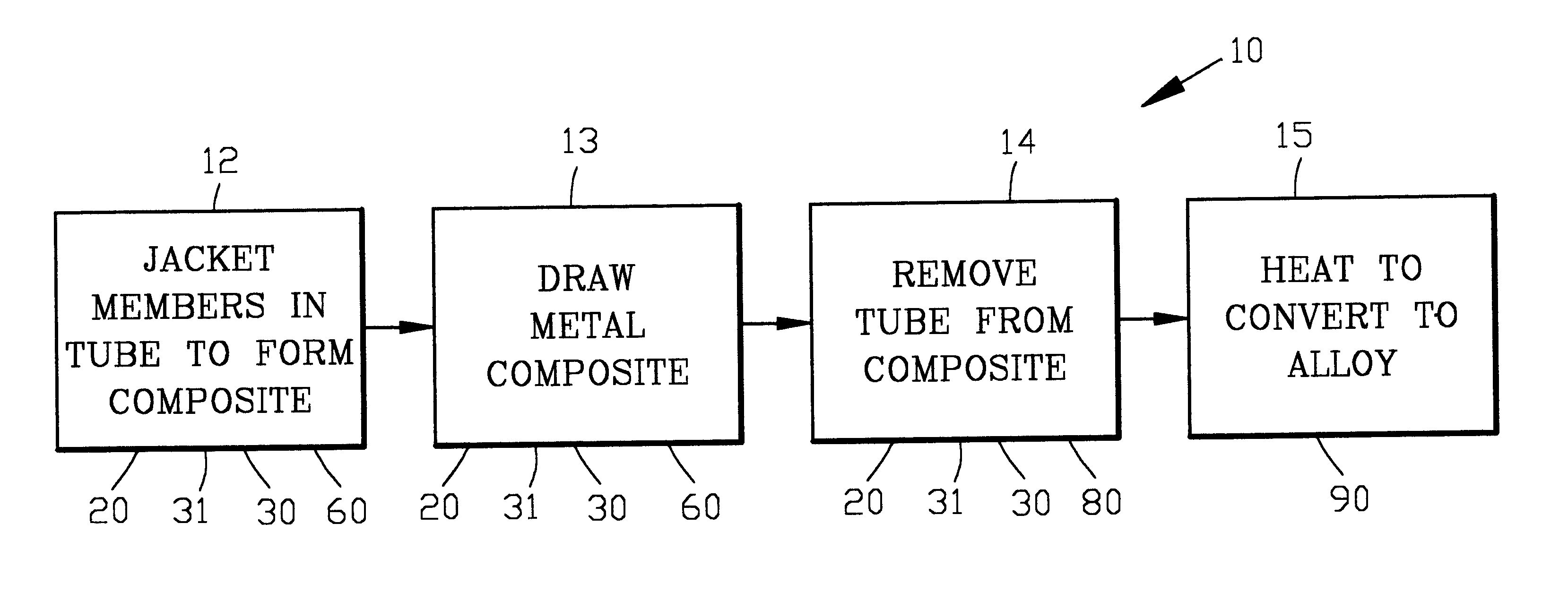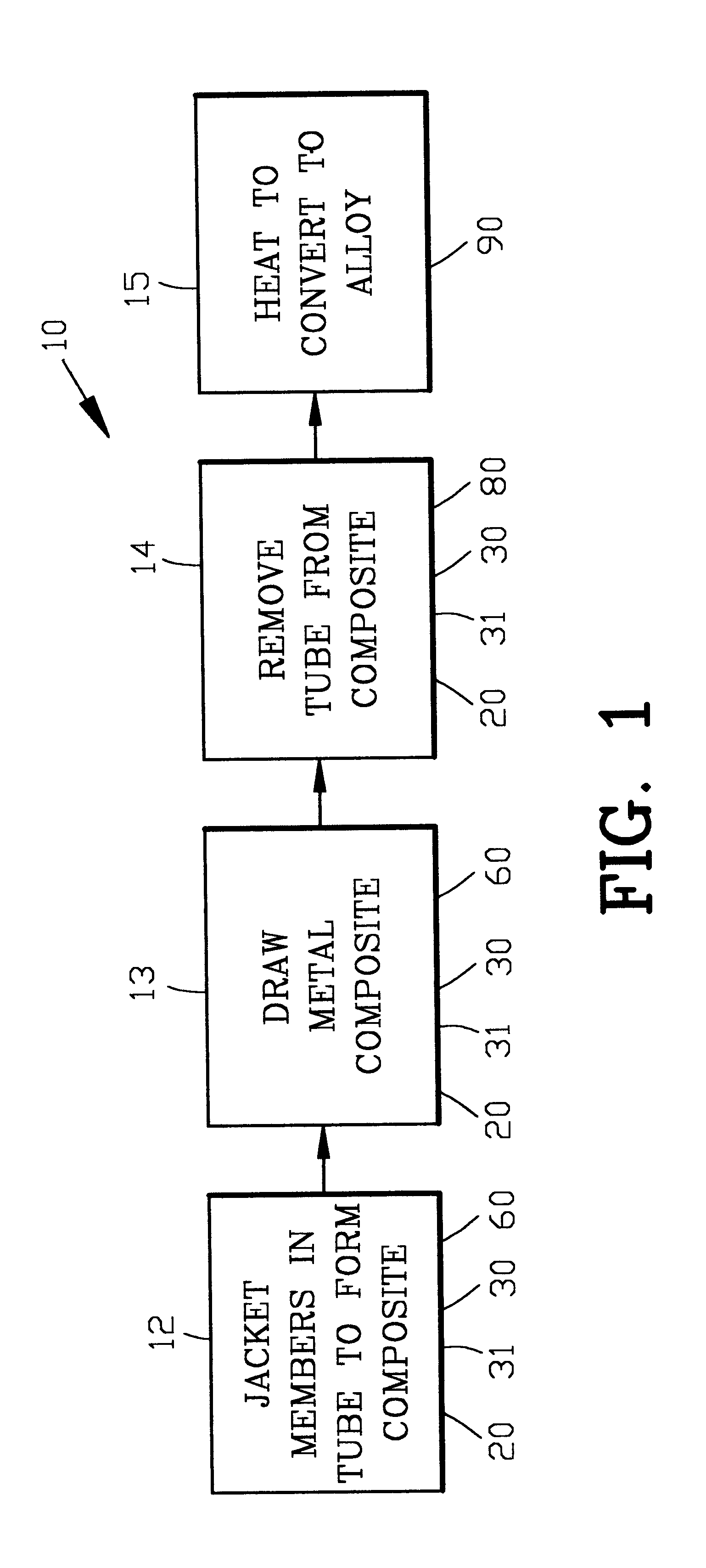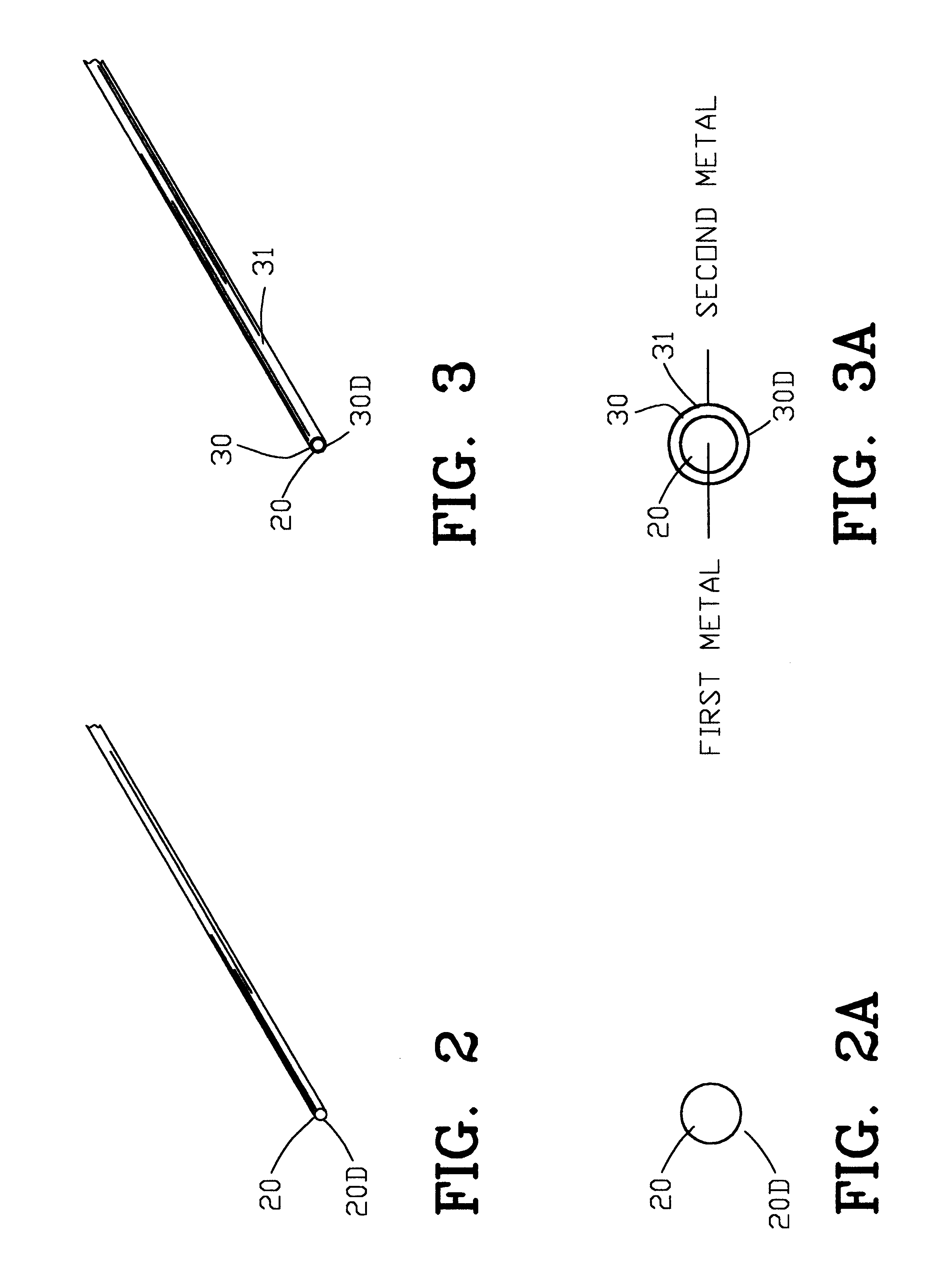Process for making an alloy
a technology of alloys and wires, applied in the field of alloy preparation, can solve the problems of high cost, low ductility, low temperature brittleness, etc., and achieve the effect of reducing the cost of obtaining low ductility alloys in wire form
- Summary
- Abstract
- Description
- Claims
- Application Information
AI Technical Summary
Benefits of technology
Problems solved by technology
Method used
Image
Examples
Embodiment Construction
The present invention is unique in that it provides a new method for creating alloys, and more specifically provides a new method for creating alloys with high ductility that by other methods would have a low ductility.
FIG. 1 is a block diagram illustrating a general process 10 for creating an alloy. The process 10 of FIG. 1 comprises cladding a plurality of at least two types of metal members with a tube. Each metal member, can have any number take a number of forms, including a metal wire form, a metal coated wire form, a multiple coated wire form, a drawn metal coated wire form, or a drawn multiple coated wire form. The metal members may have varied diameters. The at least two types of metal members are comprised of different metals. A plurality of metal members are jacketed with tubing to form a metal composite. This metal composite is then drawn to reduce the diameter of the composite. The tube and optionally any number of the metal coatings are then removed, physically and / or ...
PUM
| Property | Measurement | Unit |
|---|---|---|
| temperature | aaaaa | aaaaa |
| diameter | aaaaa | aaaaa |
| temperature | aaaaa | aaaaa |
Abstract
Description
Claims
Application Information
 Login to View More
Login to View More - R&D
- Intellectual Property
- Life Sciences
- Materials
- Tech Scout
- Unparalleled Data Quality
- Higher Quality Content
- 60% Fewer Hallucinations
Browse by: Latest US Patents, China's latest patents, Technical Efficacy Thesaurus, Application Domain, Technology Topic, Popular Technical Reports.
© 2025 PatSnap. All rights reserved.Legal|Privacy policy|Modern Slavery Act Transparency Statement|Sitemap|About US| Contact US: help@patsnap.com



